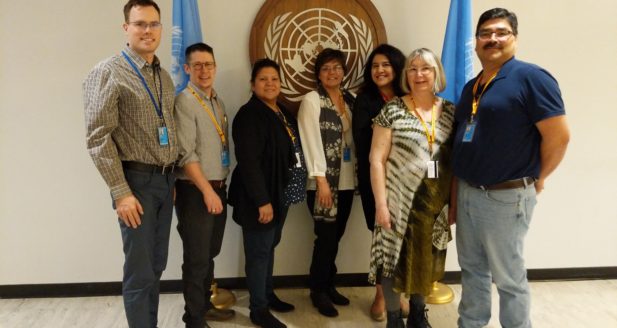By Mathew Scammell On June 10th, 2019, residents of Misipawistik Cree Nation and Grand Rapids hosted a rally and march in their community to protest the removal of night shift workers from the Grand Rapids Generating Station operated by Manitoba Hydro. This change in policy would see the dam go unmonitored from around 5:30pm until 7:00am every single day. This raised concerns in the local communities primarily as not only is the dam over fifty years old, but the people live directly downstream from the dam and would be directly impacted if a breach were to occur. Overnight operations were t
By Joseph Dipple, Ph.D. Candidate Department of Native Studies University of Manitoba My research focuses on relationships with the land and its connection to the inherent rights of Indigenous communities and nations to self-government. In particular, I am looking at how Manitoba Hydro’s operations in the north are impacting relationships with the land and as a result the ability of communities to self-govern. One of the most important aspects of this research has been learning about relationships with the land by being on the land with Elders, harvesters, land-users, knowledge holder
By Mathew Scammell On May 29th, 2019, members from Wa Ni Ska Tan attended a protest in front of the Manitoba Legislature in support of residents of Hollow Water First Nation. These residents were advocating against a silica sand mine project that had been approved by their Chief and Council, the Manitoba Government, and is being run by Canadian Premium Sand. The extracted sand is to be shipped to Alberta for use in oil and gas fracking operations. The rally itself had a mixture of speakers from representatives of both the community and environmental NGO’s. The community members who spo
In April, Dr. Peter Kulchyski and a few members of Wa Ni Ska Tan went up to Camp Morning Star on Hollow Water First Nation. The Camp was set up to delay and eventually stop the mining of Silica-rich sands. The site proposed by Canadian Premium Sands covers 300 acres and is to be used in various fracking operations across Canada. The land in question also houses numerous traplines for the community as well as habitat for moose and other wildlife in the area. The first thing we saw upon arrival was the tent that housed the Sacred Fire. At that point the fire had been on for 90 days straight,
By Taylor Galvin On the morning of May 23rd I woke up excited, ready to pack up and head to the Nibi Gathering at Bannock Point, Whiteshell Provincial Park. Since I had never been before, I knew that I was going to learn so much about the lands and water as well as hearing stories and teachings shared by Elders and scholars. We were not disappointed. The gathering began with everyone walking together in a line towards the east door of the Midewin lodge. Before entering the lodge you offered your tobacco to the grandmothers and grandfathers the surrounded the sacred fire, gave your name a
By Michael Tyas In April, Wa Ni Ska Tan had a rare and incredible opportunity to share some personal stories on a world stage at the United Nations Permanent Forum on Indigenous Issues in New York City. Our delegation was: Shirley Ducharme, Chief of O-Pipon-Na-Piwin Cree Nation Leslie Dysart, a fisherman of O-Pipon-Na-Piwin Cree Nation Betty Lou Halcrow, Women’s Chief from Cross Lake. Dr. Ramona Neckoway, Cree member of Nelson House Dr. Jarvis Brownlie, Professor of History at the University of Manitoba. We were given 75 minutes to present to other Indigenous delegates






Leave a Reply